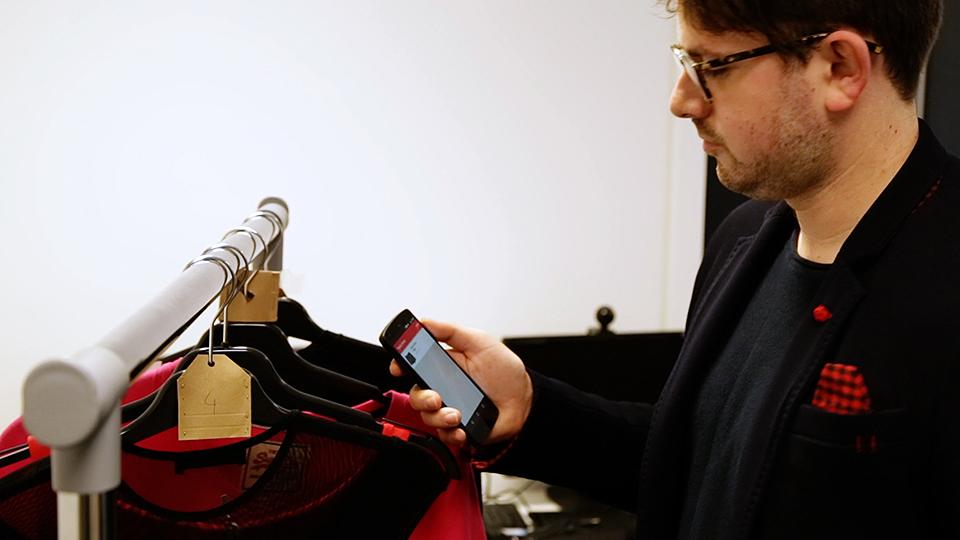SXSW: immersed in the technology of tomorrow
Primary page content
In March a spin off company from Goldsmiths, University of London will demonstrate its technology at SXSW 2018.

Technology from i2 can give retailers new insights
i2 media research limited was set up by Jonathan Freeman, Professor of Psychology at Goldsmiths, in 2002. Since then it has been involved in over 250 projects applying psychology theory and methods to the optimisation of digital media products and services.
Recently i2 media was selected to exhibit and present on the EU Innovation Radar stand at SXSW (South by Southwest) in Austin, Texas (9-13 March), a festival which showcases the latest movies, music, and technology. I asked Jonathan, who is also Managing Director of i2 media, about the road to SXSW…
Pete Wilton: What first got you interested in how psychology can enhance people’s experiences of technology
Jonathan Freeman: It was after an inspiring Biology lesson about the brain at high school that I realised that studying human behaviour through psychology was what I really wanted to do.
My undergraduate and postgraduate psychology research at the University of Sheffield focused on visual perception, and the links between perception and action. From here, I took a detour to the world of advertising – to understand how the commercial world uses its understanding of what motivates people to do different things. It was a brilliant experience, which set me up as a Senior Research Fellow and PhD student at the University of Essex in the 1990s to research people’s experiences of immersive media technologies on a project led by the Independent Television Commission (ITC).
By 1999, with my PhD completed, I came to Goldsmiths to set up my lab, sponsored by the ITC, focused on Immersive TV. I founded i2 media a few years later.
I find applying fundamental psychology theory and methods to the optimisation of digital media products and services genuinely fascinating and very productive: psychology theory and methods inspire new approaches to projects, and applied projects give me new ideas for my psychology research. From insight into experiences of virtual reality and its relation to understanding consciousness, to understanding why social media is so engaging for some people and the real reasons people engage with different media, nearly every project we engage with has both practical and fundamental considerations and impacts.
PW: Why do you think SXSW has become a key showcase for emerging technologies?
JF: I’ve wanted to go to SXSW for years: It is a genuinely interdisciplinary space – with film, music, interactive technology, comedy, and gaming all showcased. To my mind, interdisciplinary practice, study, and work really can generate new ideas, values and approaches. It is hard to think of a better environment than SXSW to experiment, engage and learn from others.
PW: What technologies will you be showing at SXSW 2018?
JF: We’re very excited to be heading to SXSW 2018 in Austin, Texas courtesy of EU@SXSW to promote the new Immersive UX Evaluation services we offer to content creators, stakeholders and funders.
22 years ago a visionary in the ITC’s Technology Group saw the future and embarked on an innovative programme of research targeted at understanding human responses to immersive media experiences, with the goal of developing tools to inform their optimisation.
This enabled me and my team to immerse ourselves in all things measurement around the UX of immersive media, and resulted in our development of the ITC-Sense of Presence Inventory (ITC-SOPI). You can read more about our most used measure of user experience in immersive media on i2’s website. 17 years after we published the ITC-SOPI (supported with funding from the EU framework programmes, commercial work, i2’s own R&D investment, and Innovate UK), the measure has been licensed to over 500 labs worldwide and cited over 800 times in the literature.
Also featuring in our demos and talks at SXSW will be our connected retail platform, Flashy. Flashy gives retailers richer than ever insight into shopper behaviour in-store, and gives shoppers passive browse histories of physical retail outlets and Flash sales and communications on their smart devices. A chunk of the founding research for Flashy was conducted in EU framework projects (including Mindsee) and the proof of concept we’ll be demonstrating at SXSW was funded by Innovate UK.
PW: What would you like people to take away from your demonstrations?
JF: For our Immersive UX Evaluation service, I want to raise awareness of it in the US, and to network and connect with potential clients and partners. For Flashy, I want to raise awareness of it in the US, and to find a retail and/or tech partner with whom to initiate a live pilot of the platform, in a real shop with regular customers.
Our presence at SXSW is enabled by EU@SXSW, run by the EU’s Innovation Radar. So I also see a key goal of our presence, talks and demonstrations there as being to let the world know more about the genuine innovation that collaborative R&D – supported by the EU, and by Innovate UK – enables.
I’m expecting a lot of interesting conversation too though – around the benefits and risks of both immersive and internet of things technologies, applications and content.
PW: How do you hope the SXSW 2018 experience will benefit your research?
JF: One benefit of showcasing i2’s work at SXSW is to enhance the already excellent impact arising from my research at Goldsmiths. I see impact as an integral part of our work as academics, and believe there is a genuinely virtuous circle between impact and research. I am quite confident I’ll be having a lot of conversations at SXSW which will sow the seeds of new ideas for my academic research down the line. I can’t wait!